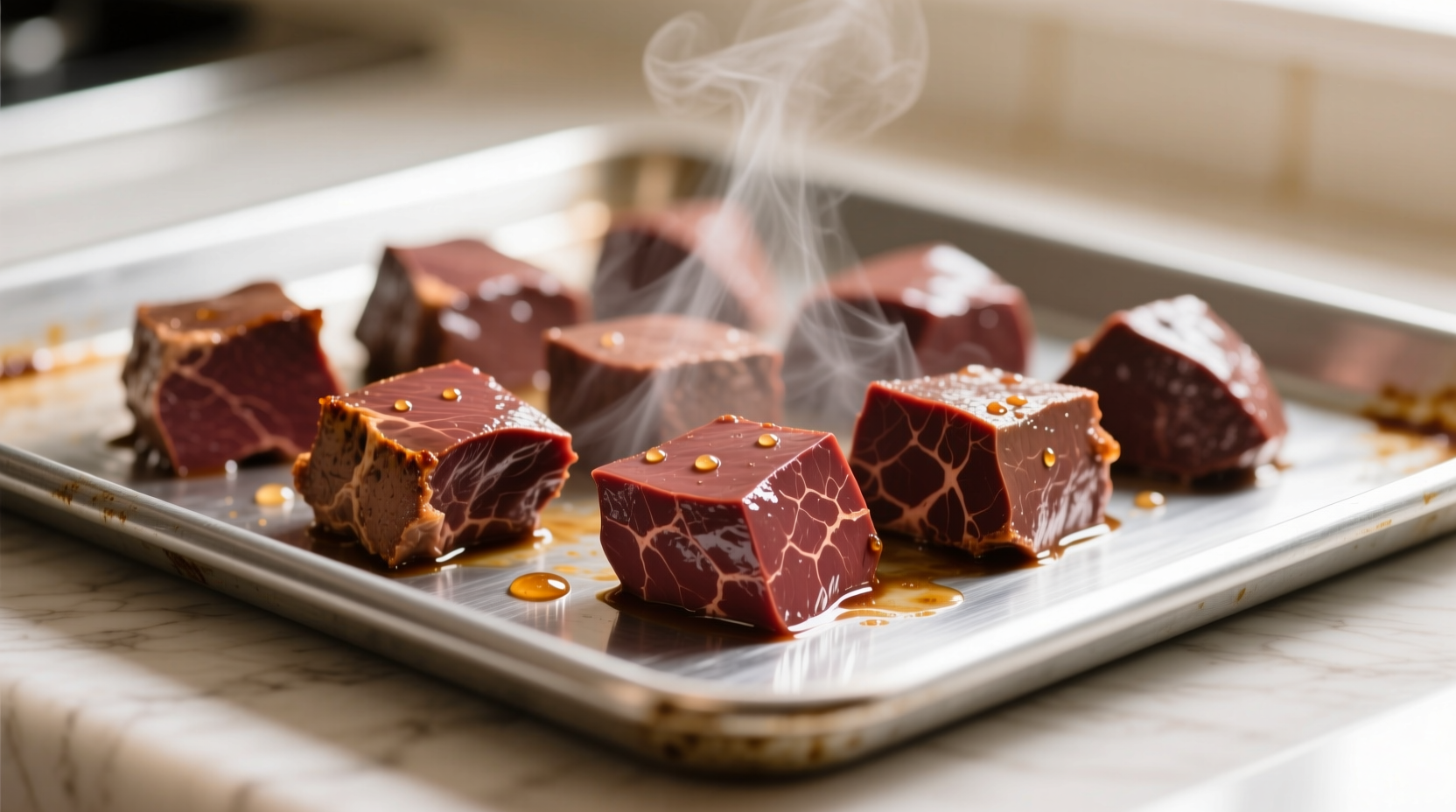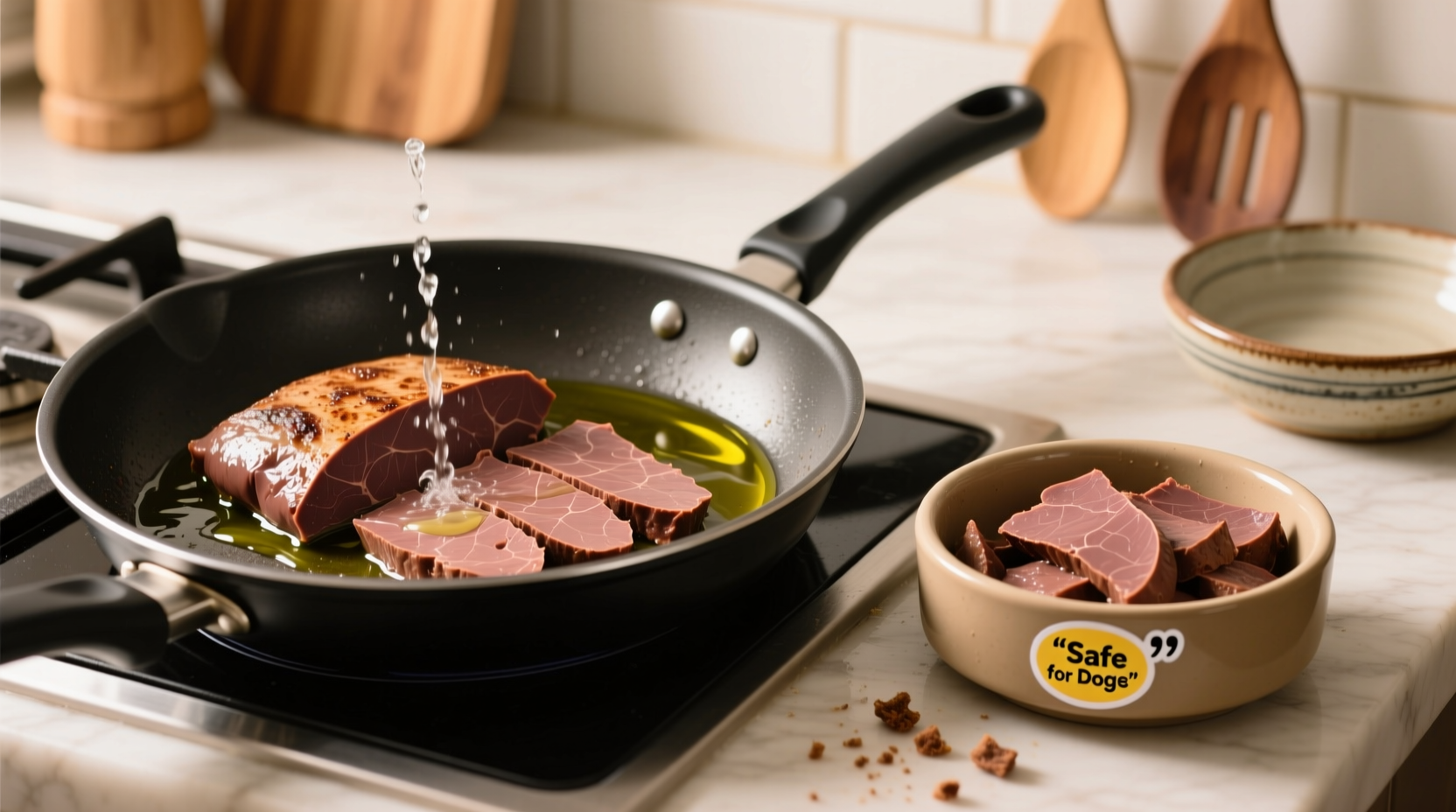Why Beef Liver Benefits Your Dog's Health
Beef liver ranks among the most nutrient-dense organ meats available for canine nutrition. According to research published in the Journal of Animal Physiology and Animal Nutrition, liver contains 50 times more vitamin A than muscle meat, plus significant amounts of B12, riboflavin, and essential amino acids that support your dog's energy metabolism and immune function.
Veterinary nutritionists at the American College of Veterinary Nutrition confirm that moderate liver consumption improves coat quality and liver function in dogs. However, they emphasize that excessive intake causes vitamin A toxicity, leading to bone deformities and joint pain. This critical balance explains why precise portion control matters more than preparation method.
| Nutrient | Per 100g Beef Liver | Dog's Daily Requirement (30lb dog) | Safe Maximum |
|---|---|---|---|
| Vitamin A | 16,898 IU | 1,500-3,000 IU | 5,000 IU |
| Vitamin B12 | 83.1 mcg | 15-30 mcg | 60 mcg |
| Copper | 14.0 mg | 1.8-3.6 mg | 7.2 mg |
Nutritional data sourced from USDA FoodData Central and AAFCO Dog Nutrient Profiles (2023)
Essential Safety Considerations Before Cooking
Before preparing liver for your dog, understand these critical boundaries:
- Portion limits vary by dog size: A Chihuahua should never receive more than 1 teaspoon, while a Great Dane can safely consume up to 2 tablespoons weekly
- Avoid if your dog has pancreatitis: The high fat content in liver can trigger flare-ups according to veterinary guidelines from the American Kennel Club
- Never feed raw liver to puppies: Their developing digestive systems cannot handle potential pathogens
- Stop immediately if vomiting occurs: This indicates possible vitamin A overload requiring veterinary consultation
Step-by-Step Cooking Method: Simple Boiling Technique
Boiling preserves maximum nutrition while eliminating food safety risks. Follow these precise steps:
- Preparation: Trim all visible fat and connective tissue using a sharp knife. Fat increases calorie density without nutritional benefit for dogs.
- Cutting: Dice liver into 1-inch cubes for even cooking. Smaller pieces cook faster while maintaining texture.
- Boiling: Place cubes in a saucepan, cover with cold water, and bring to a gentle simmer (not boil) over medium heat.
- Cooking time: Simmer for exactly 10-12 minutes. Overcooking destroys heat-sensitive B vitamins.
- Cooling: Drain and spread on a baking sheet to cool completely before serving. Never serve hot liver to dogs.

Alternative Cooking Methods Compared
While boiling remains the gold standard, these alternatives work with modifications:
- Baking: Place on parchment-lined baking sheet at 350°F for 15 minutes. Flip halfway through. Results in drier texture but preserves more nutrients than frying.
- Light sautéing: Use only 1 tsp coconut oil over medium-low heat for 8 minutes. Avoid butter or olive oil which contain fats unsuitable for regular canine consumption.
- Air frying: 325°F for 10 minutes with no added oil. Creates chewier texture some dogs prefer, but reduces moisture content significantly.
Serving Guidelines and Storage Tips
Maximize nutritional benefits with these evidence-based recommendations:
- Mix with regular food: Combine cooked liver with your dog's usual kibble at a 1:9 ratio (10% liver maximum)
- Frequency limits: Serve no more than once weekly for adult dogs. Senior dogs may tolerate twice weekly in smaller portions.
- Refrigeration: Store in airtight container for up to 3 days. The American Veterinary Medical Association confirms cooked liver remains safe for 72 hours refrigerated.
- Freezing: Portion into ice cube trays, cover with low-sodium broth, and freeze for up to 2 months.
Common Preparation Mistakes to Avoid
Veterinary hospitals report these preventable errors regularly:
- Using seasonings: Salt, garlic, or onions cause toxicity even in small amounts
- Overcooking: Destroys heat-sensitive nutrients like folate and vitamin C
- Feeding too frequently: Causes vitamin A toxicity which requires expensive veterinary treatment
- Serving with connective tissue: Creates choking hazards and digestive blockages
When to Consult Your Veterinarian
While liver benefits most dogs, certain health conditions require professional guidance:
- Dogs with kidney disease need phosphorus-restricted diets
- Pancreatitis patients require extremely low-fat preparations
- Diabetic dogs need consistent carbohydrate levels
- Puppies under 6 months need specialized nutrient ratios











 浙公网安备
33010002000092号
浙公网安备
33010002000092号 浙B2-20120091-4
浙B2-20120091-4